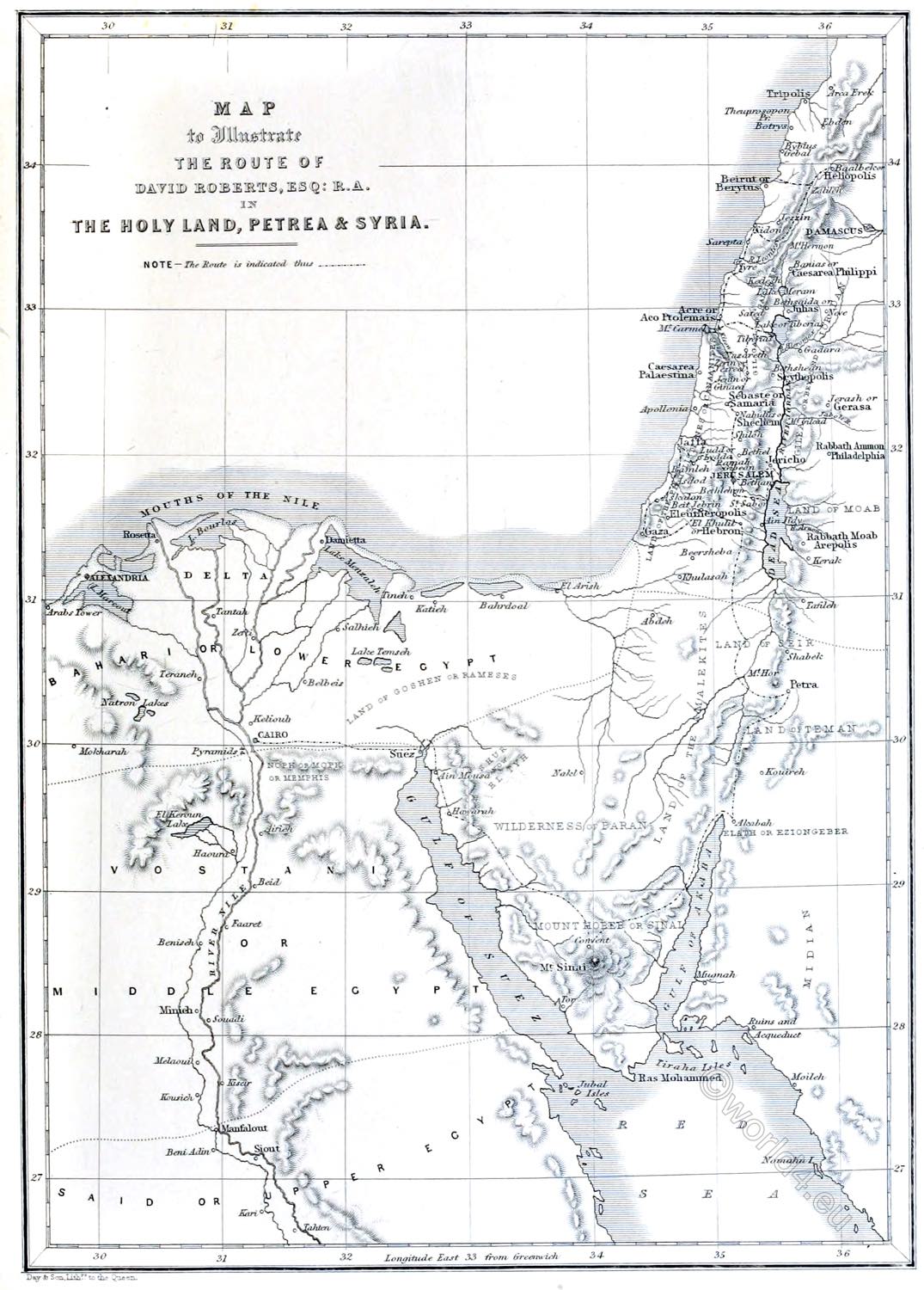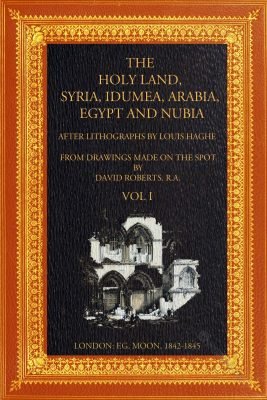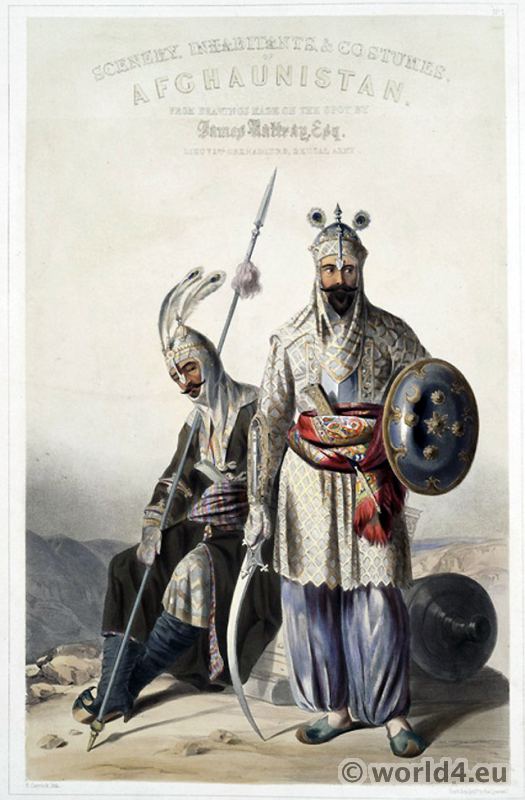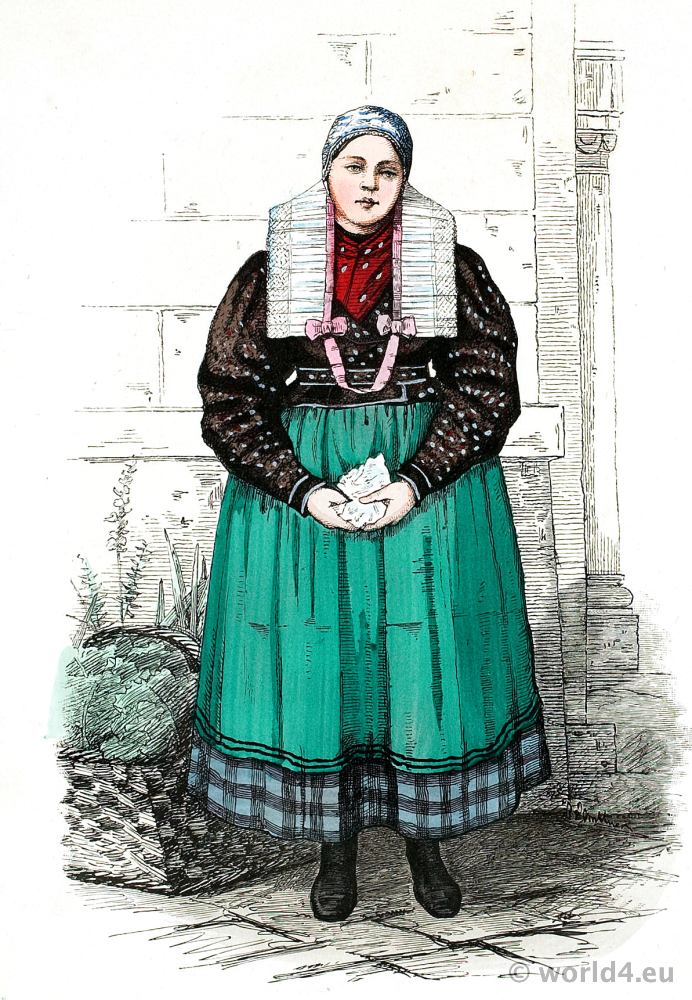VOL. I. JERUSALEM AND GALILEE.
The Holy Land, Syria, Idumea, Arabia, Egypt, & Nubia, by David Roberts, George Croly, William Brockedon. London: Lithographed, printed and published by Day & Son, lithographers to the Queen. Cate Street, Lincoln’s Inn Fields, 1855.
LIST OF SUBJECTS.
JERUSALEM AND GALILEE.
THE ARMORIAL ENSIGNS OF JERUSALEM
VOL. I.
- PL. 1. PORTRAIT OF DAVID ROBERTS, ESQ., R.A.
- PL. 2. ENTRANCE TO THE HOLY SEPULCHRE—Title Vignette.
- PL. 3. THE DAMASCUS GATE.
- PL. 4. THE GREEK CHAPEL OF THE HOLY SEPULCHRE.
- PL. 5. TOMB OF ST. JAMES.
- PL. 6. JERUSALEM, FROM THE ROAD LEADING TO BETHANY.
- PL. 7. ENTRANCE TO THE TOMB OF THE KINGS.
- PL. 8. THE MOSQUE OF OMAR, ON THE ANCIENT SITE OF THE TEMPLE.
- PL. 9. THE TOMB OF ZECHARIAH, VALLEY OF JEHOSHAPHAT.
- PL. 10. JERUSALEM FROM THE SOUTH.
- PL. 11. CHURCH OF THE HOLY SEPULCHRE, EXTERIOR VIEW.
- PL. 12. THE POOL OF BETHESDA.
- PL. 13. THE TOWER OF DAVID.
- PL. 14. THE SHRINE OF THE HOLY SEPULCHRE.
- PL. 15. GOLDEN GATE OF THE TEMPLE, SHOWING THE ANCIENT WALLS.
- PL. 16. JERUSALEM — THE CHURCH OF THE PURIFICATION.
- PL. 17. THE UPPER FOUNTAIN OF SILOAM.
- PL. 18. JERUSALEM, FROM THE MOUNT OF OLIVES.
- PL. 19. STONE OF UNCTION — CHURCH OF THE HOLY SEPULCHRE.
- PL. 20. CHAPEL OF ST. HELENA — CRYPT OF THE HOLY SEPULCHRE.
- PL. 21. FOUNTAIN OF JOB — VALLEY OF HINNOM.
- PL. 22. JERUSALEM FROM THE NORTH.
- PL. 23. LOWER POOL OF SILOAM — VALLEY OF JEHOSHAPHAT.
- PL. 24. THE ENTRANCE TO THE CITADEL OF JERUSALEM.
- PL. 25. ABSALOM’S PILLAR — VALLEY OF JEHOSHAPHAT.
- PL. 26. CALVARY — HOLY SEPULCHRE.
- PL. 27. MOUNT TABOR, FROM THE PLAIN OF ESDRAELON.
- PL. 28. NAZARETH, GENERAL VIEW.
- PL. 29. FOUNTAIN OF THE VIRGIN, NAZARETH.
- PL. 30. CONVENT OF THE TERRA SANTA, NAZARETH.
- PL. 31. THE SHRINE OF THE ANNUNCIATION, NAZARETH.
- PL. 32. CHURCH OF THE ANNUNCIATION, NAZARETH.
- PL. 33. FOUNTAIN OF CANA.
- PL. 34. CANA, GENERAL VIEW.
- PL. 35. TOWN OF TIBERIAS, LOOKING TOWARDS LEBANON.
- PL. 36. THE SEA OF TIBERIAS, LOOKING TOWARDS BASHAN.
- PL. 37. TIBERIAS, FROM THE WALLS; SAFED IN THE DISTANCE.
- PL. 38. TIBERIAS, LOOKING TOWARDS HERMON.
- PL. 39. THE TOMB OF JOSEPH AT SHECHEM.
- PL. 40. JACOB’S WELL AT SHECHEM.
- PL. 41. ENTRANCE TO NABLOUS.
- PL. 42. NABLOUS, ANCIENT SHECHEM.
- PL. 43. RUINS OF THE CHURCH OF SAINT JOHN, SEBASTE.
- PL. 44. SEBASTE, ANCIENT SAMARIA.
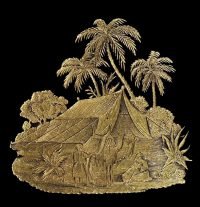
LIST OF SUBJECTS.
THE JORDAN AND BETHLEHEM.
Vol II.
Pl. 45. BAALBEC, FROM THE FOUNTAIN—Title Vignette.
Pl. 46. ENCAMPMENT OF THE PILGRIMS AT JERICHO.
Pl. 47. DESCENT UPON THE VALLEY OF THE JORDAN.
Pl. 48. THE IMMERSION OF THE PILGRIMS IN THE JORDAN.
Pl. 49. JERICHO.
Pl. 50. THE DEAD SEA, LOOKING TOWARDS MOAB.
Pl. 51. CONVENT OF ST. SABA.
Pl. 52. CHAPEL OF ST. SABA.
Pl. 53. WILDERNESS OF ENGEDI, NEAR THE CONVENT OF ST. SABA.
Pl. 54. BEIL JEBRIN, OR ELEUTHEROPOLIS.
Pl. 55. HEBRON.
Pl. 56. RUINS OF SEMUA.
Pl. 57. ASKELON.
Pl. 58. ASHDOD.
Pl. 59. GAZA.
Pl. 60. CHRISTIAN CHURCH OF ST. GEORGE AT LUD, ANCIENT LYDDA.
Pl. 61. JAFFA, LOOKING SOUTH.
Pl. 62. JAFFA, LOOKING NORTH.
Pl. 63. CAIPHAS, LOOKING TOWARDS MOUNT CARMEL.
Pl. 64. RAMLA, ANCIENT ARIMATHEA.
Pl. 65. ST. JEAN D’ACRE, FROM THE LAND.
Pl. 66. ST. JEAN D’ACRE, FROM THE SEA.
Pl. 67. CAPE BLANCO.
Pl. 68. PORT OF TYRE.
Pl. 69. GENERAL VIEW OF TYRE.
Pl. 70. RUINS OF THE IONIC TEMPLE OF OM EL HAMED, NEAR TYRE.
Pl. 71. TYRE, FROM THE ISTHMUS.
Pl. 72. SAREPTA.
Pl. 73. SIDON, GENERAL VIEW.
Pl. 74. SIDON, FROM THE NORTH.
Pl. 75. SIDON, LOOKING TOWARDS LEBANON.
Pl. 76. CITADEL OF SIDON.
Pl. 77. BAALBEC, GENERAL VIEW.
Pl. 78. JENIN, ANCIENT JEZREEL.
Pl. 79. BAALBEC, WESTERN PORTICO.
Pl. 80. LESSER TEMPLE OF BAALBEC, LOOKING TOWARDS LEBANON.
Pl. 81. DOORWAY, BAALBEC.
Pl. 82. THE CIRCULAR TEMPLE, BAALBEC.
Pl. 83. PORTION OF THE EASTERN PORTICO, BAALBEC.
Pl. 84. SHRINE OF THE NATIVITY, BETHLEHEM.
Pl. 85. BETHLEHEM.
Pl. 86. BETHANY.
Pl. 87. CHANCEL OF THE CHURCH OF ST. HELENA, BETHLEHEM.

LIST OF SUBJECTS.
IDUMEA AND PETRA.
Vol. III.
- Pl. 88. TEMPLE OF EL KHASNE, PETRA—Title Vignette.
- Pl. 89. ARABS OF THE DESERT.
- Pl. 90. EL DEIR, PETRA.
- Pl. 91. ENCAMPMENT OF THE ALLOEEN IN WADY ARABA.
- Pl. 92. EL KHASNE.
- Pl. 93. ANCIENT WATCH-TOWER, APPROACH TO PETRA.
- Pl. 94. LOWER PORTION OF EL KHASNE, PETRA.
- Pl. 95. THE ARCH ACROSS THE RAVINE, PETRA.
- Pl. 96. PETRA, SHOWING THE UPPER OR EASTERN END OF THE VALLEY.
- Pl. 97. TOMB OF AARON, SUMMIT OF MOUNT HOR.
- Pl. 98. THE THEATRE, PETRA.
- Pl. 99. MOUNT HOR, FROM THE CLIFFS ENCIRCLING PETRA.
- Pl. 100. REMAINS OF A TRIUMPHAL ARCH AT PETRA.
- Pl. 101. CONFERENCE OF ARABS.
- Pl. 102. THE ACROPOLIS (KUSR FARON), LOWER END OF THE VALLEY.
- Pl. 103. EXCAVATIONS AT THE EASTERN END OF THE VALLEY PETRA.
- Pl. 104. THE RAVINE, PETRA.
- Pl. 105. THE NECROPOLIS, PETRA.
- Pl. 106. SITE OF PETRA, SOUTH.
- Pl. 107. FORTRESS OF AKABA, ARABIA PETREA.
- Pl. 108. ISLAND OF GRAIA, GULF OF AKABA.
- Pl. 109. CONVENT OF ST. CATHERINE, MOUNT SINAI.
- Pl. 110. ENCAMPMENT OF THE OULAD-SAID, MOUNT SINAI.
- Pl. 111. ROCK OF MOSES, WADY-EL-LEJA, MOUNT HOREB.
- Pl. 112. CHAPEL OF THE CONVENT OF ST. CATHERINE.
- Pl. 113. THE CHRISTIAN AND MAHOMETAN CHAPELS ON MOUNT SINAI.
- Pl. 114. ASCENT OF THE LOWER RANGE OF MOUNT SINAI.
- Pl. 115. ASCENT TO THE SUMMIT OF SINAI.
- Pl. 116. THE CONVENT OF ST. CATHERINE, MOUNT SINAI. (LOOKING TOWARDS)
- Pl. 117. CHAPEL OF ELIJAH, MOUNT SINAI.
- Pl. 118. CONVENT OF ST. CATHERINE, WITH MOUNT HOREB.
- Pl. 119. AN ANCIENT EGYPTIAN TEMPLE ON GEBEL GARABE.
- Pl. 120. CONVENT OF ST. CATHERINE, MOUNT SINAI, PRINCIPAL COURT.
- Pl. 121. AYUN MUSA — THE WELLS OF MOSES – WILDERNESS OF TYH.
- Pl. 122. APPROACH TO MOUNT SINAI.
- Pl. 123. SCENE ON THE QUAY OF SUEZ.
- Pl. 124. SUEZ, GENERAL VIEW.
- Pl. 125. MAP TO ILLUSTRATE MR. ROBERTS’S ROUTE.


NOTICE OF MR. ROBERTS’S JOURNEY IN THE EAST.
(Intro from: VOL. I. JERUSALEM AND GALILEE.)
To visit the Holy Land and make drawings of the scenes of sacred history and the antiquities of Egypt, had been, long before this journey was undertaken by Mr. Roberts, the brightest of his anticipations as an artist. He had already acquired so high a reputation for his skill and judgment in the treatment of architectural subjects, that the service of his pencil was sought, to make us acquainted with the structures of the Moors in Spain, and to make drawings from, and adapt for the use of the engraver, many of the sketches furnished by travelers in Palestine, of the buildings and objects of interest published in the “Illustrations of the Bible:” these studies, and his journey to Spain and Morocco for his Spanish scenery, excited in him an irrepressible desire to visit the East. The drawings of the French Commission in Egypt had been declared very incorrect, and De Laborde’s Petra was charged also with inaccuracy.
To go and draw for himself scenes and objects of such intense interest could alone satisfy him; the result has been his richly-stored portfolios, from which the subjects for this work have been selected.
Having made himself thoroughly acquainted with all matters requisite for the journey, and such works as were published on the countries and objects he was about to visit, and having prepared himself with letters and introductions, especially from the Foreign Office to Colonel Campbell, our Consul-General in Egypt and Syria, he left London August 31st, 1838, and reached Alexandria on the 24th of September following. Every facility was kindly and readily given by Colonel Campbell for the accomplishment of our Artist’s objects.
The Nile was at its height, and therefore visited at the most advantageous time. He ascended to Cairo, with introductions from Colonel Campbell, and there, by the aid of those to whom he had been recommended, Mr. Roberts was furnished with a guard to accompany him everywhere, and protect him from interruption or insult whilst sketching: be even obtained permission to enter every mosque he desired to visit, a privilege never before given to a Christian, but to which one condition was attached—that in the instruments he used in making his studies, for he was allowed to paint there, he was not to desecrate the mosque by the introduction and use of brushes made of hog’s bristles.
From Cairo Mr. Roberts, with an Arab servant, ascended the Nile in a boat commanded by a captain with a crew of eight men, provisioned for three months. He was entirely master of the party, and carried the British flag at the mast-bead. He thus ascended to the second cataract, Wady Halfa, and before he returned to Cairo, he had made drawings of almost every edifice from the extremity of Nubia to the Mediterranean.
While at Cairo, he made the acquaintance of M. Linant, who had been De Laborde’s companion in his visit to Petra; he kindly showed Mr. Roberts the original sketches which had been made in that excursion, and thus added stimulants, which were unnecessary, to his undertaking the interesting journey to Wady Moosa, or Petra. He immediately made preparations for crossing the Desert by the route of the Israelites to Mount Sinai—by Akaba, and through the great valley of El Ghor to Petra, and thence to Hebron, instead of entering Palestine by El Arish and Gaza, as he had intended.
On the 8th of February, 1839, having been joined by Mr. Pell and Mr. Kinnear, (the latter of whom has since published an account of this journey,) they assumed the Arab dress, and, with their servants well armed, left Cairo: taking with them twenty-one camels, and escorted by nearly as many Bedouin Arabs, of the tribe of the Beni Saids.
On the 27th they reached the Fortress of Akaba, on the Red Sea; here they parted with the Arab tribe hitherto their friends and guides, and put themselves under the escort of the tribe of Alloeens, who were to conduct them to Petra and thence to Hebron. On the 6th of March they reached Mount Hor, upon which rests the tomb of Aaron: at its base, deeply seated in its ravines and bounded by its precipitous sides and lofty peaks, lies the excavated city of Petra, the Idumea of the Greeks, the Edom of the prophet Jeremiah—the city of impregnable position, which gloried hi its strength, but which strikes the traveller, who is fortunate enough to visit it, as an awful realization of the prophetic denunciations: — “Thy terribleness hath deceived thee, and the pride of thine heart, O thou that dwellest in the clefts of the rock, that boldest the height of the hill: though thou shouldest make thy nest as high as the eagle, I will bring thee down from thence, saith the Lord.”
Mr. Roberts and his companions were the first who had been permitted to pitch their tents within Petra; it was the result of a long and violent altercation between the Arab tribe inhabiting Wady Moosa and the Alloeens, with whom an old grudge remained unsettled.
At length a sufficient amount was agreed upon as a peace-offering for a truce, and the occupation of an encampment within the city for five days without molestation ; during this time our Artist, fortunately, worked incessantly on his studies, for on the fifth night the little party was assailed and some of their amis were carried off; but it was suspected by our travelers, that the attack of the Arabs of Wady Moosa was connived at by their guides, who were impatient to return ; the next morning they struck their” tents, and bade farewell to Petra, the wonder of the Desert.
On the 16th, the party having reached Hebron, and learnt that the plague had barred access to Jerusalem, proceeded to the coast, visiting Gaza, Askelon, and Jaffa; but being informed here that no recent case had occurred in the Holy City, and that the quarantine would shortly be removed, they set out for Jerusalem, and arrived there on the 29th of March, the day before Palm Sunday, a day held by the Christians in the East in great veneration.
While at Jerusalem, Mr. Roberts received much kindness and assistance from the then governor, Achmet Aga, whom he accompanied with above four thousand Christian pilgrims to Jericho and the river Jordan. He afterwards visited the Dead Sea, the Lake of Tiberias, the sea-coast and mountain-range of Lebanon, and the -ruins of Baalbec; such exertions, and the severe privations which he suffered on the journey, produced intermittent fever, which compelled him to abandon his projected excursions to Damascus and Palmyra.
How entirely he had been devoted to the great objects he had proposed to himself before he left England, this work will abundantly prove. The extraordinary merit and interest of his drawings, when seen after his return, created a sensation not easily forgotten; the fidelity of his accurate pencil, his skillful and rigid adherence to the truth of costume, his attention to just and characteristic effect, were acknowledged by all travelers and artists competent to judge.
The demand for this work sprang out of the interest thus excited. Commissions from royalty and the chief patrons of art crowded upon him for pictures from the subjects he had studied in the East, and his contemporaries in art acknowledged his merits by the honor of electing him into the Royal Academy.
